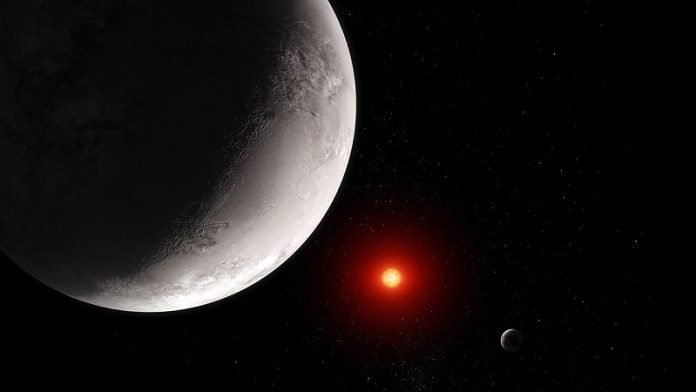
NASA’s James Webb Space Telescope has brought us some exciting news about TRAPPIST-1 c, a planet located 40 light-years away from Earth.
The telescope has been checking out the heat that the planet gives off.
What’s amazing is that this planet is the “chilliest” rocky planet ever examined in this way with a temperature of about 225 degrees Fahrenheit.
TRAPPIST-1 c, which orbits a small red dwarf star, is about the same size as Venus and gets the same amount of radiation from its star as Venus does from the Sun.
But here’s the twist – it doesn’t seem to have the thick carbon dioxide atmosphere that Venus does.
Why is that important, you ask? Well, if a planet has a thick carbon dioxide atmosphere, it’s a clue that it might have had a lot of water when it was forming. And water is one of the key ingredients for life as we know it.
A group of international scientists used the Webb Telescope to check out the heat energy coming from TRAPPIST-1 c. They found that if this planet does have an atmosphere, it’s probably very thin.
This is exciting because until now, scientists were mainly able to study planets with thick, hydrogen-rich atmospheres. But with the Webb Telescope, they can now look for atmospheres made up mostly of oxygen, nitrogen, and carbon dioxide – just like Earth.
But there’s another puzzle. Red dwarf stars, like the one TRAPPIST-1 c orbits, can be pretty harsh on planets.
They emit intense X-ray and ultraviolet radiation which can strip away a planet’s atmosphere. So, this study also helps to answer the big question – can planets around red dwarf stars keep their atmospheres?
To figure all this out, the team watched the planet go behind its star four times (a ‘secondary eclipse’). By comparing the light when the planet is behind the star to when it’s beside the star, they could calculate the amount of heat the planet’s day side gives off.
They also found that if TRAPPIST-1 c had a thick carbon dioxide atmosphere, they wouldn’t have been able to see any light coming from the planet. This tells us that the planet might not have a thick atmosphere after all, or it might have a very thin carbon dioxide atmosphere without clouds.
This also suggests that TRAPPIST-1 c, and possibly its neighbor planets, might have formed with very little water. These findings are super important, because they can help scientists understand whether these distant planets could support life.
Lastly, the precision of the Webb Telescope is mind-boggling. It’s like noticing that only four out of 10,000 tiny light bulbs have gone out. Now, that’s some super-detective work!
Next year, researchers plan to observe the entire orbits of TRAPPIST-1 b and TRAPPIST-1 c. This will let them see how the temperatures change from the day to the night sides of the planets and will provide even more information on whether these planets have atmospheres or not.
The research is published in Nature.



